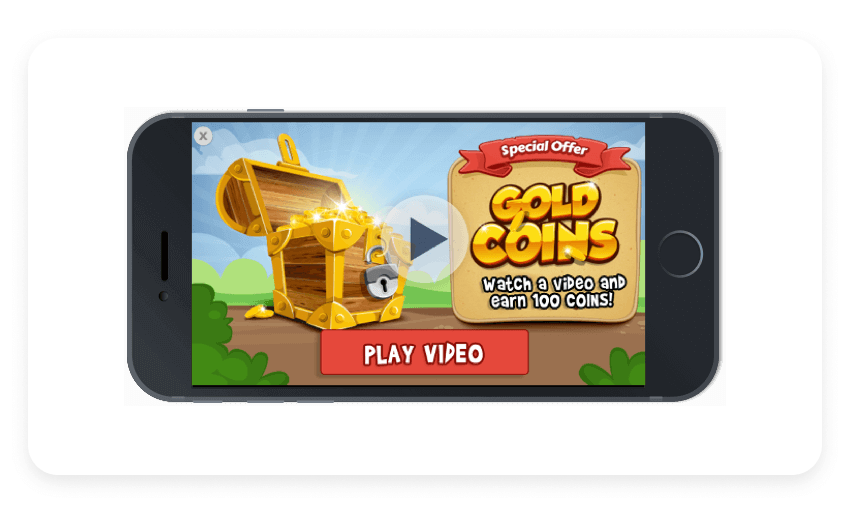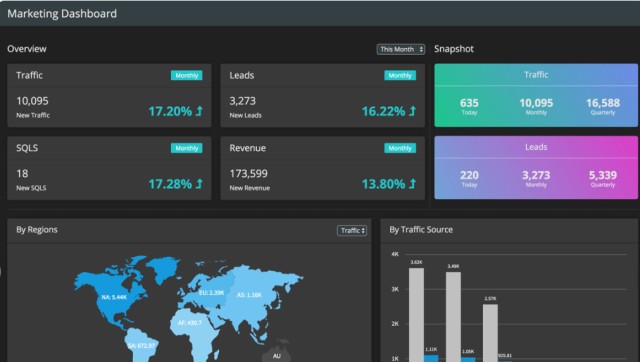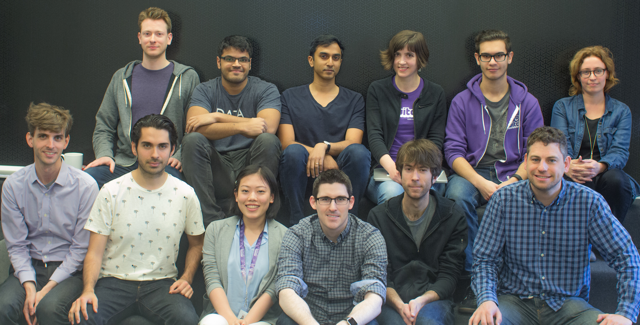The Future of Game Monetization: Unity’s Strategic Leap into Cross-Platform Advertising
In the ever-evolving landscape of the Gaming Industry, the tectonic plates of digital advertising are shifting. Driven by a global push for user privacy, legacy methods of ad targeting are becoming obsolete, forcing tech giants to innovate or risk irrelevance. At the heart of this transformation is Unity, the powerhouse engine behind a staggering number of the world’s video games. In a move signaling a major strategic pivot, Unity is aggressively expanding its advertising ambitions, aiming to build a powerful, privacy-first bridge between the colossal mobile gaming audience and the booming market of Connected TV (CTV). This initiative isn’t just an incremental update; it’s a fundamental reimagining of how developers monetize their games and how brands reach the highly coveted gamer demographic. By leveraging its deep integration within the Game Development ecosystem, Unity is positioning itself to become a dominant force in the next generation of programmatic advertising, a future where context is king and user privacy is paramount.
This strategic direction aims to solve one of the biggest challenges in modern advertising: reaching a unified audience across disparate platforms without relying on invasive tracking identifiers. For developers creating everything from hyper-casual Mobile Gaming hits to complex RPG Games, this could unlock significant new revenue streams. For advertisers, it promises a direct line to a massive, engaged, and historically hard-to-reach audience. This article delves into the technical and strategic underpinnings of Unity’s ambitious plan, analyzing its implications for developers, the broader Gaming Community, and the future of digital media.
Section 1: Deconstructing Unity’s Privacy-First Advertising Vision
To understand the significance of Unity’s move, one must first grasp the seismic shifts that have occurred in digital advertising. The old world relied heavily on identifiers like Apple’s IDFA (Identifier for Advertisers), which allowed for precise user tracking across different apps and services. This paradigm crumbled with the introduction of Apple’s App Tracking Transparency (ATT) framework, which requires apps to get explicit user consent for tracking. With the vast majority of users opting out, the effectiveness of traditional ad targeting on iOS plummeted. Google is following a similar path with its Privacy Sandbox on Android, signaling a definitive end to the era of third-party identifiers in mobile.
The Challenge: Thriving in a Post-Identifier World
This new, privacy-centric reality presents a massive challenge for the Mobile Gaming sector, which has long depended on programmatic advertising for both user acquisition and monetization. Without reliable identifiers, key metrics become harder to measure, and targeting becomes less precise, potentially lowering ad revenue (eCPMs) for developers. This is the problem Unity is determined to solve. The company’s core advantage lies in its engine’s ubiquity. Because the Unity engine is embedded at the foundational level of countless games—from breakout Indie Games to major hits—it has access to a wealth of first-party, contextual data. This includes information about the game genre (e.g., FPS Games, Strategy Games), in-game events (e.g., level completion, item acquisition), and session length, all without collecting personally identifiable information (PII). This contextual data is the cornerstone of Unity’s privacy-first advertising strategy.
The Solution: Contextual Targeting and Programmatic Power
Programmatic advertising is the automated buying and selling of digital advertising space. Unity’s strategy is to build a sophisticated programmatic platform that uses its rich contextual signals to create powerful, anonymized audience segments. For example, the platform can identify a cohort of users who frequently play and excel at high-skill Competitive Gaming titles like MOBA Games or Battle Royale games. An advertiser, such as a brand selling high-performance Gaming Peripherals like Gaming Keyboards or Gaming Mice, can then target this cohort without ever knowing the individual identities of the players. This move was significantly bolstered by Unity’s acquisition of ironSource, a leader in the app monetization and distribution space, which brought a wealth of ad tech expertise and a massive network under the Unity umbrella. This combined force gives Unity the scale and technology to execute its ambitious vision.
Section 2: The CTV Connection: Bridging Two Worlds of Entertainment
%20(1).webp)
The most forward-thinking aspect of Unity’s strategy is its plan to connect its massive mobile gaming audience with the rapidly expanding world of Connected TV (CTV). CTV—which includes smart TVs and streaming devices like Roku, Apple TV, and Amazon Fire Stick—has become a primary channel for household entertainment, and ad spending is surging as brands follow eyeballs away from traditional linear TV. The challenge for advertisers has always been the fragmentation of the CTV space and the difficulty of applying data-driven targeting.
Why Gaming and CTV are a Perfect Match
At first glance, a player tapping away at a mobile game and a family watching a movie on their smart TV seem like two separate worlds. However, Unity sees a powerful synergy. Both are high-engagement, lean-in digital entertainment experiences. The audiences often overlap significantly; the same person who plays Fortnite News-worthy updates on their Gaming PC might also be an avid watcher of streaming services. Unity’s hypothesis is that the rich contextual signals from a user’s gaming habits can be used to predict their interests and serve them more relevant ads in a CTV environment. This creates a holistic view of the consumer’s entertainment journey.
A Real-World Scenario: The Cross-Platform Campaign
Imagine a major auto manufacturer launching a new electric SUV. Their target demographic is tech-savvy, environmentally conscious consumers. Using Unity’s platform, they could execute a multi-faceted campaign:
- Initial Targeting (Mobile): The campaign targets users playing simulation and city-building Strategy Games on mobile, as this genre often appeals to individuals interested in technology, planning, and systems. The ad shown could be a short, interactive banner.
- Audience Modeling: Unity’s platform analyzes the anonymized data from this mobile cohort to build a “lookalike” audience model based on tens of thousands of non-personal data points.
- Cross-Platform Activation (CTV): The platform then identifies devices within the CTV ecosystem that correspond to this lookalike model. When someone from that household is streaming content, the auto manufacturer can serve a full 30-second video ad for their new electric SUV.
This approach is powerful because it’s privacy-compliant—it never links a specific person’s mobile device to their TV—but it is far more effective than generic demographic targeting. It allows brands to leverage the deep insights from gaming behavior to inform their high-impact CTV advertising strategy, a capability few other platforms can offer at scale.
Section 3: Implications for Developers, Advertisers, and the Gaming Ecosystem
Unity’s strategic focus on a unified, privacy-first ad platform has profound implications for stakeholders across the entire Gaming Industry. It represents both a massive opportunity and a call to adapt to new methodologies.
For Game Developers: A New Monetization Lifeline
For developers, particularly in the Indie Games and mobile space, this is potentially game-changing. The decline of identifier-based targeting has created uncertainty and revenue instability. Unity’s platform offers a path forward.

- Access to Premium Budgets: By connecting their in-game ad inventory to the CTV ecosystem, developers can tap into the large, premium brand advertising budgets that are typically reserved for television. This could lead to significantly higher eCPMs and overall revenue.
- Enhanced Player Experience: Better contextual targeting can lead to more relevant ads, which can feel less intrusive to players and improve retention. An ad for a new fantasy series shown within an RPG Game is far more likely to be well-received than a random, irrelevant ad.
- Best Practices for Integration: To maximize their potential on this new platform, developers should focus on implementing the latest Unity Ads SDK and enriching their games with meaningful contextual events. Tracking player progression, genre preferences, and in-game achievements can provide the valuable, privacy-safe data that powers the entire system. This is a crucial piece of modern Game Design.
For Advertisers: Reaching the Unreachable
Gamers are a notoriously difficult audience for brands to reach through traditional channels. They are often young, tech-savvy, and adept at using ad-blockers. Unity offers a direct, authenticated channel to this audience in the context of their passion.
- Unprecedented Scale: Unity’s engine powers a significant percentage of all games, giving advertisers access to a global audience of billions. This includes players across all major genres, from casual puzzles to hardcore MMORPG News followers.
- Contextual Relevance: The ability to target based on game genre and player behavior is a powerful tool. A company launching a new line of Gaming Laptops or Graphics Cards can target players of graphically intensive AAA Games on PC Gaming platforms, ensuring their message reaches the most relevant consumers.
- Cross-Platform Storytelling: The mobile-to-CTV bridge allows for sophisticated, sequential messaging, building brand narratives across multiple touchpoints in a consumer’s day.
Section 4: The Road Ahead: Opportunities and Inevitable Hurdles
While Unity’s vision is compelling, the path to execution is fraught with challenges. The ad tech landscape is fiercely competitive, and the technical hurdles of building a truly effective, privacy-first cross-platform solution are immense.
Opportunities on the Horizon
The primary opportunity for Unity is to become the indispensable platform for the modern Game Development lifecycle: create, operate, and monetize. By solving the monetization piece of the puzzle in a privacy-first world, Unity strengthens its ecosystem and creates a powerful moat against competitors. While Unreal Engine News often focuses on high-fidelity graphics for Console Gaming, Unity’s strategic advantage lies in its dominance in mobile and its forward-thinking ad tech stack. Success would cement its status as an end-to-end solution for a huge segment of the market.

Potential Pitfalls and Challenges
- Technical Complexity: Probabilistically matching audiences across mobile and CTV without identifiers is incredibly difficult. It relies on sophisticated data science, machine learning, and vast amounts of data to be accurate. Any shortcomings in the technology will undermine advertiser confidence.
- Market Education: Many advertisers are still conditioned to think in terms of precise, deterministic targeting based on user IDs. Unity will need to invest heavily in educating the market on the value and effectiveness of contextual and probabilistic targeting methods.
- Intense Competition: Unity is not alone. Tech giants like Google, Apple, and Amazon have their own immense ecosystems and ad platforms. Furthermore, specialized ad tech companies are also racing to solve the same cross-platform, privacy-first challenge.
Recommendations for the Community
For those in the Gaming Community, from developers to marketers, the best approach is one of informed engagement. Developers should stay current with Unity’s SDKs and explore how they can leverage contextual data in their Game Design. Advertisers should begin experimenting with smaller, contextually-driven campaigns within gaming environments to understand the audience and build expertise. The world of Gaming Tech is moving quickly, and those who adapt first will be best positioned to benefit from this new paradigm.
Conclusion: A Defining Moment for Unity and the Gaming Industry
Unity’s strategic push to build a privacy-first advertising bridge between mobile gaming and Connected TV is more than just a new business initiative; it’s a bold response to the fundamental reshaping of the digital world. By leveraging its unique position at the core of Game Development, Unity is attempting to solve one of the most complex problems facing developers and advertisers today. This move transforms the company from primarily an engine provider into a comprehensive platform for creation and monetization, deeply integrating it into the financial success of its users.
The success of this venture is not guaranteed, as the technical and competitive challenges are significant. However, if successful, it will unlock immense value, providing developers with sustainable revenue and giving brands an unparalleled way to connect with the global gaming audience. This ambitious gambit will be a key storyline to watch in the ongoing evolution of both the Gaming Industry and the broader digital advertising landscape.












